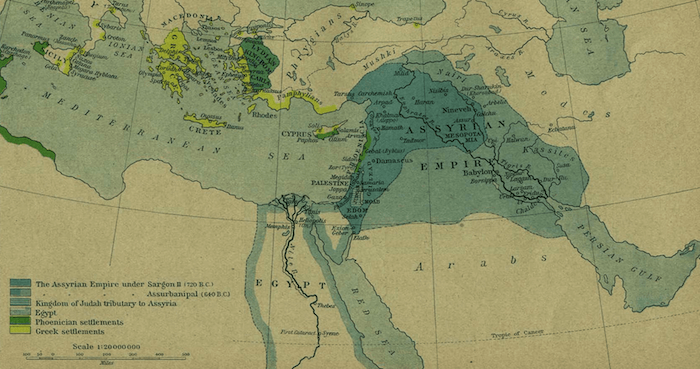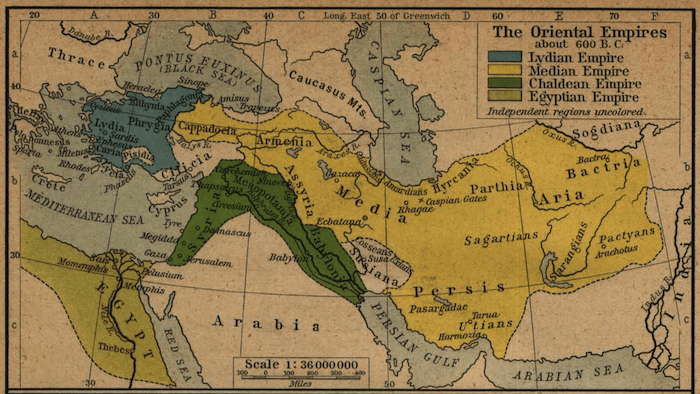Warfare > Urartu-Assyria War
Urartu-Assyria War
Background
The Urartu–Assyria War was a major conflict between Urartu and the Assyria that began around 714 BC. The larger war started when the Assyrian leader named Sargon II invaded the neighboring kingdom and began conquering. However, Urartu was a rich and powerful civilization so upon the death of Sargon they launched several counter-attacks and managed to reclaim lost territory under the rule of Argisht II and Rusa II. The Assyrians launched another invasion of Urartu and were successful in capturing the territory.
The Hurrian speaking Iron Age Kingdom of Urartu began its rise to power in the mid-9th century BC. Within a century, the relatively new state had conquered the majority of what were to later be known as the Armenian Highlands. However, the Assyrian King Tiglath-Pileser III saw the rising Kingdom of Urartu as a growing threat to the safety of his kingdom. The Assyrian leadership deemed that they must end this threat through direct confrontation with the young kingdom.[1]1st Assyrian Invasion
The reign of Sargon II brought a new wave of Assyrian military campaigns focused on the peripheral territory of their empire. He launched an invasion of Urartu in 714 BC and won important victories at the Battle of Lake Urmia and the sack of the temple at the city of Mushashir. This caused a complete defeat and Rusa I committed suicide.
Urartu Retaliation
When Sargon II died in battle in 706 BC the kingdom of Urartu retaliated at Assyria for the previous invasion and destruction they had wreaked through their land. Under the rule of Argishti II the Urartians successfully pushed the Assyrians back into their own territory and managed to also seize some land of their own. They were able to successfully capture the towns around Lake Urmia such as Mushashir, Ushnu, Tepe. Following this military campaign Urartu experienced a great period of peace and prosperity that would last all throughout the reign of Argishti II and through his successor Rusa II as well.
2nd Assyrian Invasion
While the Urartians were able to hang to some of the Assyrian territory it was not long before the great kings conquered the area along with the rest of Mesopotamia and claiming the largest empire in ancient history up until that time in the process. The Urartian kings Rusa III and his successor Rusa IV both tried to defend their civilization but to no avail. Eventually Urartu was turned into an Assyrian vassal state like many other kingdoms and was used to insulate the civilization from the tribes to the north in the Caucasus Mountains.

Assyrian Empire Map (750-625 BC) - Historical Atlas (1923)
Aftermath
Following the Urartu-Assyria War neither political entity was destined to survive. The constant conquests and military campaigns of Assyria weakened the central power of the king following the death of Ashurbanipal. After a few years beginning in 627 BC Assyria fell into a series of civil wars that eventually culminated in the Revolt of Babylon by Nabopolassar and an invasion by the Median Empire under Cyaxares.
The Assyrian Empire would be destroyed through a series of battles that saw them pushed to the most outer limits of their territory. What had become the largest empire in all of Mesopotamia had collapsed due to an inability to maintain the military requirements to defend the conquering land. This was one of the biggest problems with all ancient empires and was exacerbated by the lack of quick communication.

Mesopotamian Empires (600 BC) - Historical Atlas (1923)
Following the invasion and sack of Assyria the remnants of the civilization of Urartu was sacked and destroyed by the Medes and Scythians in 590 BC. This would result in the complete collapse of their civilization and neither Urartu or Assyria were destined to be great political powers again in ancient history.
Urartu-Assyria WarUrartu in 743 BCLocationArmenian HighlandsResultAssyrian victoryBelligerentsUrartuNeo-Assyrian EmpireCommanders and leadersRusa I,Argishti II,Rusa II,Sardur III,Erimena,Rusa III,Rusa IVTiglath-Pileser III,Sargon II,Sennacherib,Esarhaddon,AshurbanipalStrengthno reliable estimatesno reliable estimates